The article "7 Key Insights from ABA Therapy Research for Parents" is all about sharing vital information with parents regarding the effectiveness and strategies of Applied Behavior Analysis (ABA) therapy for children with autism. It emphasizes that personalized treatment plans and early intervention can make a huge difference! When families are actively involved and data-driven approaches are used, the outcomes of ABA therapy really shine. Numerous studies back this up, showing lasting behavioral improvements and skill development in children who receive this tailored support. Let’s explore this together!
Research in Applied Behavior Analysis (ABA) therapy shows incredible potential for children with autism, leading to notable improvements in communication, social skills, and overall behavior. In this article, we’ll explore seven key insights that highlight how personalized treatment plans, the use of technology, and the importance of early intervention and family involvement can make a difference.
As parents, you might be asking: what specific strategies can you implement to help your child succeed in ABA therapy? Let’s dive in together!
Comprehensive studies in ABA therapy research have shown that ABA interventions can really make a difference for youth with autism. Many kids undergoing ABA treatment experience notable improvements in communication skills, better social interactions, and a reduction in challenging behaviors. In fact, a thorough meta-analysis of ABA therapy research revealed that over 89% of studies reported positive behavioral changes after ABA interventions, highlighting its effectiveness. Plus, long-term, intensive ABA intervention leads to significant positive effects on language skills in individuals with ASD, with improvements lasting for up to 18 years after the intervention!
What’s great about ABA treatment is its organized approach, which allows for measurable improvement. Practitioners can customize interventions to meet each child's unique needs. This process gets even better with the help of advanced AI technology that automates progress report generation, freeing up 50% of the time usually spent on writing reports—so more time can be focused on direct treatment! As Ralph Moller points out, "the customized aspect of ABA treatment allows for personalized modifications," ensuring that the treatment is not only effective but also adaptable to each child’s specific situation.
This data-driven approach, combined with the expertise of qualified behavior analysts, is essential for ABA therapy research to create personalized plans with clear objectives and evidence-based strategies. It maximizes the potential for positive outcomes while empowering caregivers to actively support their child’s behavioral goals through education and involvement. Let’s explore this together and see how you can make a difference in your child's journey!
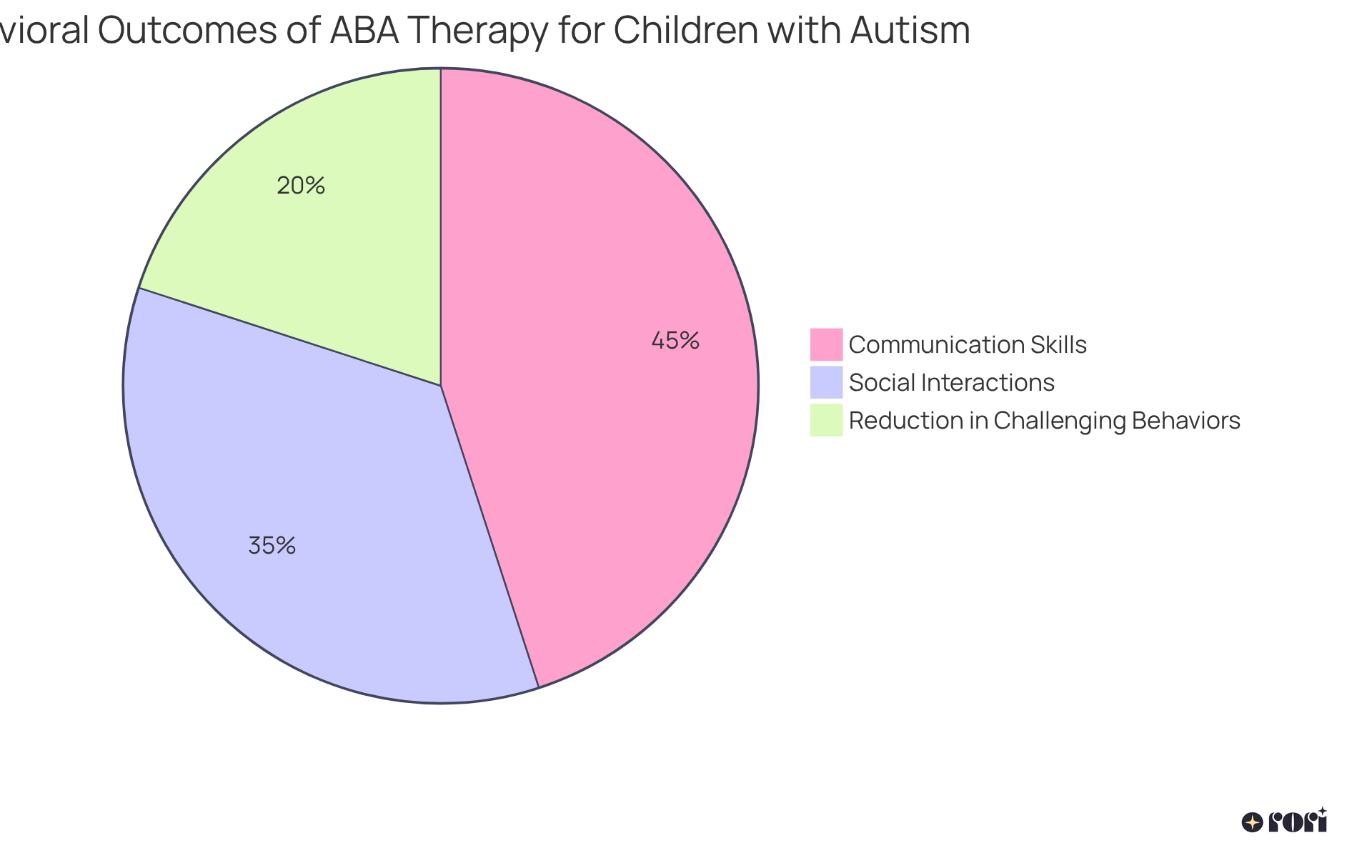
Personalized treatment plans are essential in ABA therapy research! They ensure that interventions are specifically tailored to the unique needs of each individual. These plans come to life through thorough evaluations that assess the individual's strengths, challenges, and specific goals. A qualified behavior analyst crafts these personalized plans, which include measurable objectives and evidence-based approaches. This process emphasizes continuous assessment and adjustment, making sure we respond to the individual's needs. By focusing on personalized strategies, therapists can effectively address the unique behavioral patterns and learning styles of each young person.
For example, imagine a child who struggles with social interactions. Their treatment plan might prioritize social skills training through role-playing and peer interactions. This targeted method not only boosts involvement but also fosters significant advancement in ABA therapy research, leading to better overall results in treatment. Research indicates that when caregivers are actively involved in ABA therapy research, about 90% of individuals demonstrate remarkable progress! This really highlights the importance of personalized strategies in enhancing therapy effectiveness.
Clinicians emphasize that ABA therapy research is essential for personalizing objectives and aims tailored to each individual's needs to optimize progress and results. This individualized approach creates a supportive learning environment and empowers children to thrive in their social and communication skills. Techniques like positive reinforcement, prompting, and modeling are key to these personalized strategies, further enhancing the effectiveness of ABA practices. Plus, the endorsement of ABA interventions by medical organizations, including the US Surgeon General and the American Psychological Association, reinforces its validity as an evidence-based treatment for individuals with autism.
So, let’s explore this together! We’re here to help you every step of the way!
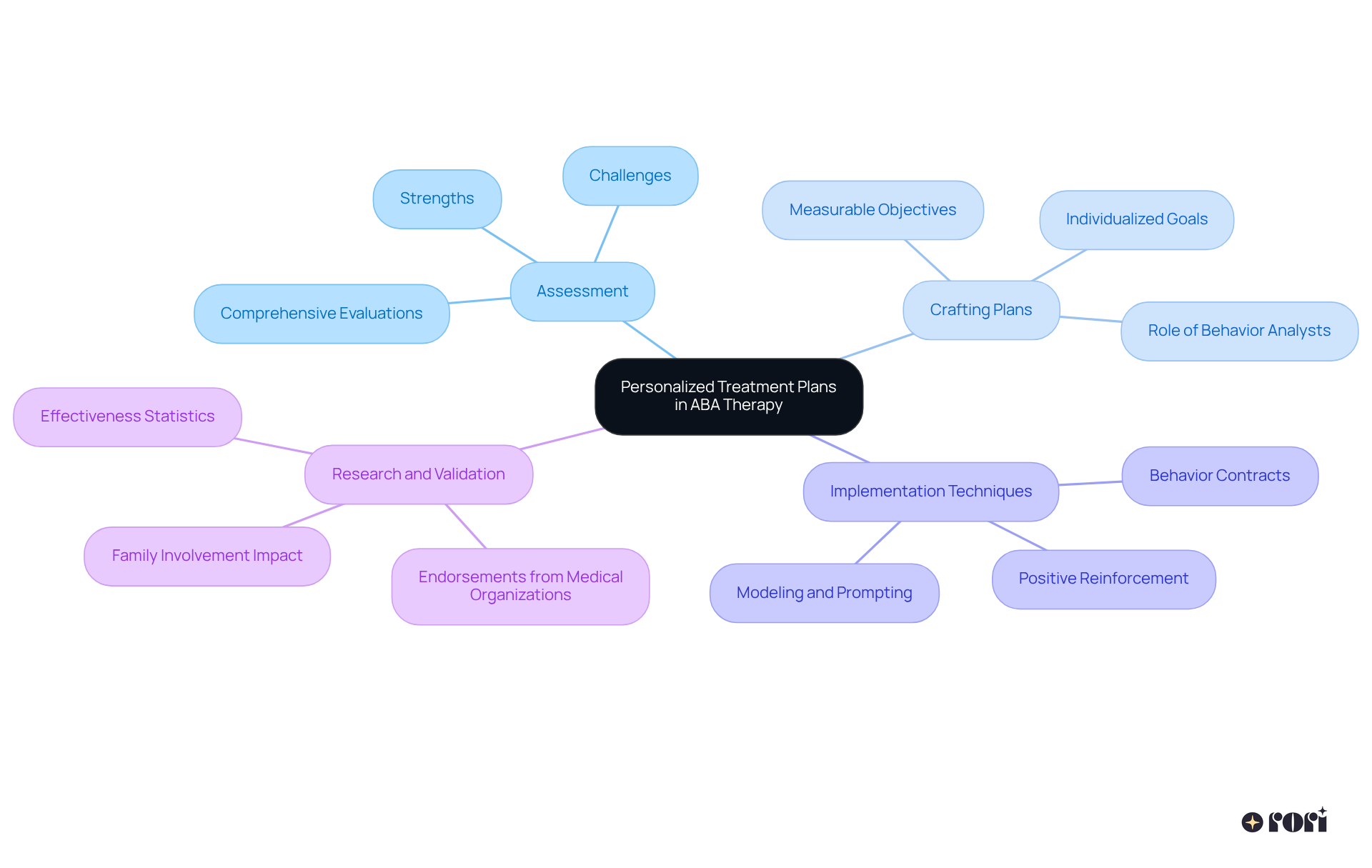
Technology is truly transforming ABA therapy! With exciting innovations like AI-driven analytics, telehealth platforms, and mobile apps, care delivery is becoming more effective and accessible than ever. Imagine a certified behavior analyst crafting personalized plans that not only set measurable objectives but also use evidence-based methods to encourage positive behavior changes and learning. This approach emphasizes continuous assessment, ensuring that each plan adapts to the unique needs of every individual as they grow.
AI tools are game-changers, allowing therapists to analyze behavioral data in real time. This means they can quickly adjust treatment plans based on what they observe, making sure that interventions are tailored to each person's needs. Plus, by automating progress report creation, therapists can free up 50% more time for direct treatment!
ABA therapy research indicates that interventions based on ABA, especially those incorporating technology, lead to significant improvements in communication, socialization, and overall behavior. For example, there's a standardized mean difference of d=0.30 for communication and a 9.7% boost in goal success rates after implementing a hybrid ABA treatment model. Isn't that incredible?
And let’s not forget about virtual reality (VR)! It’s emerging as a fantastic tool for social skills training, creating immersive environments where young people can practice interactions safely. These advancements not only make therapy more engaging but also give therapists valuable insights into a child's progress. By embracing these innovative tools, ABA treatment becomes more effective and personalized, ultimately leading to better outcomes for children and their families. So, let’s explore this journey together and see how we can support your child's growth!
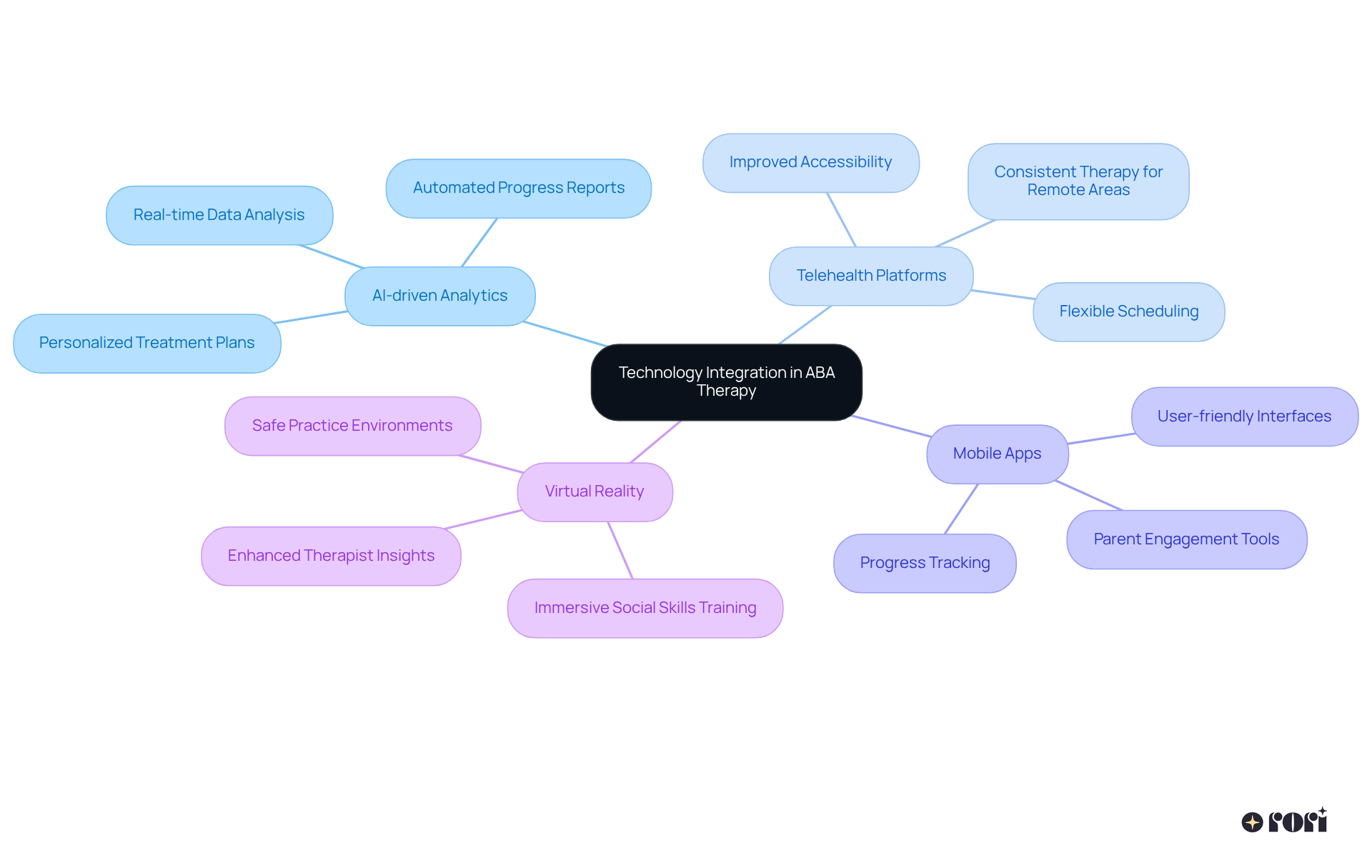
Did you know that ABA therapy research consistently shows that early intervention using Applied Behavior Analysis (ABA) can make a world of difference for youth with autism? Starting treatment early takes advantage of those crucial growth periods, helping little ones develop essential skills.
Research indicates that kids who undergo early ABA therapy often demonstrate remarkable progress in cognitive abilities, language skills, and social interactions compared to their peers who start later. For instance, children who begin ABA interventions before the age of five are more likely to hit developmental milestones and blend into mainstream educational settings.
This really emphasizes the importance of timely referrals and proactive involvement in treatment, as highlighted by ABA therapy research, laying a strong foundation for long-term success. The evidence shows that early intervention not only nurtures immediate skill development but also contributes to more positive paths in overall growth.
So, for parents and caregivers, this is a vital consideration. Let’s explore this together!
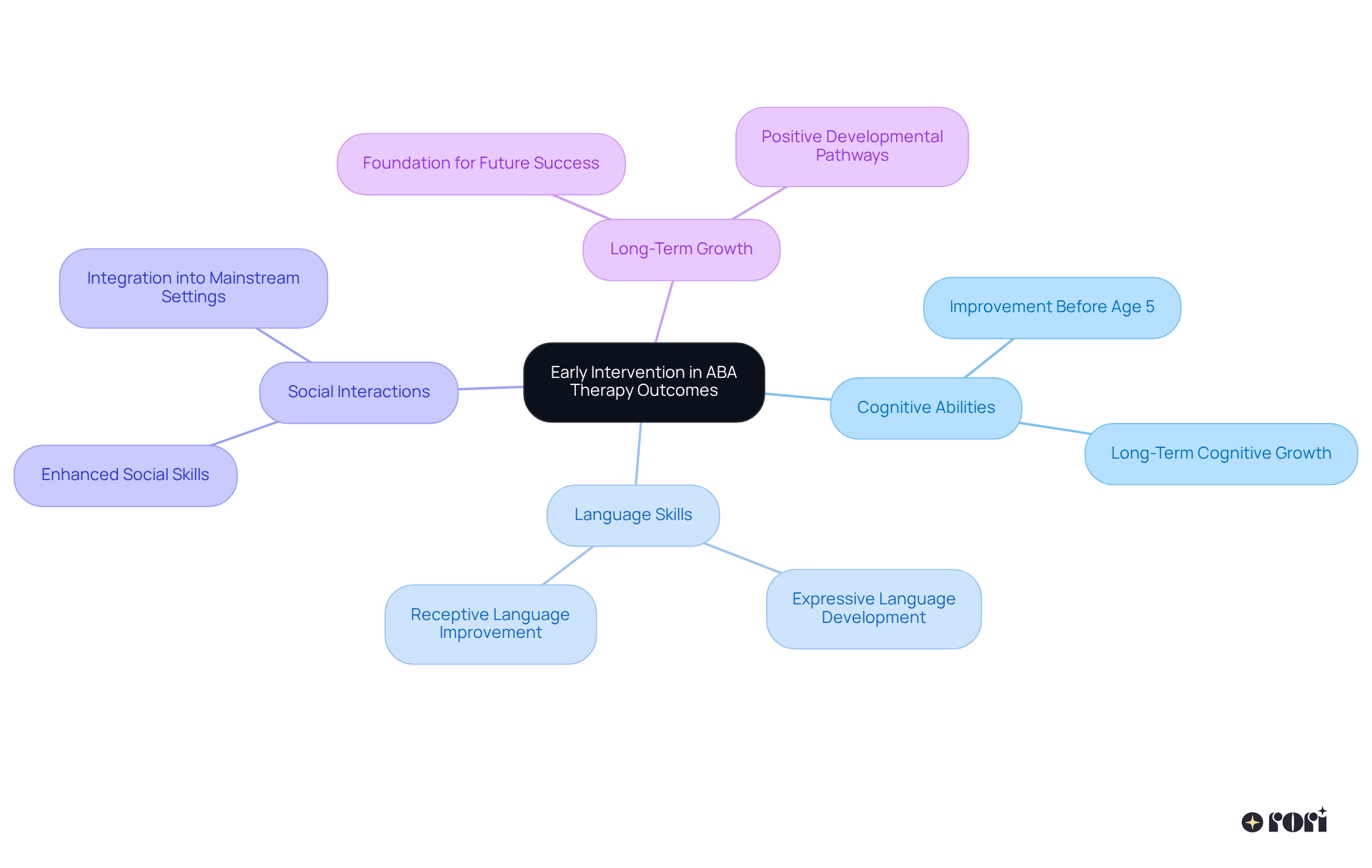
Active family involvement is essential for the success of ABA therapy research! Studies show that when parents and caregivers jump into the therapeutic process, young individuals see some amazing improvements. For example, kids whose guardians get involved in ABA training can make progress up to 47% faster than those who only receive clinical intervention. This participation allows family members to reinforce what’s learned at home, making sure behaviors carry over into different settings.
When parents are trained in ABA techniques, they can easily use these strategies during everyday activities, like mealtimes and bedtime routines. This hands-on approach not only enhances a young person’s learning experience but also creates a loving environment that encourages kids to practice new skills. As a result, youngsters gain more independence and improve their social interactions, which are both crucial for their overall development.
Plus, effective parent training can lead to a 47.7% reduction in challenging behaviors, showcasing the powerful impact of parental involvement. By actively participating in their child’s treatment, parents can create a supportive atmosphere that boosts skill retention and generalization. This ultimately lays the groundwork for lasting positive changes in their child’s behavior and social skills.
As Rori Care - ABA Support highlights, parental engagement is key to enhancing the effectiveness of ABA therapy research for youth with Autism Spectrum Disorder (ASD). It really emphasizes the importance of working together to achieve successful outcomes. And don’t forget, adjusting treatment plans based on progress reports ensures that interventions remain effective and tailored to each child’s unique needs. Let’s explore this together!
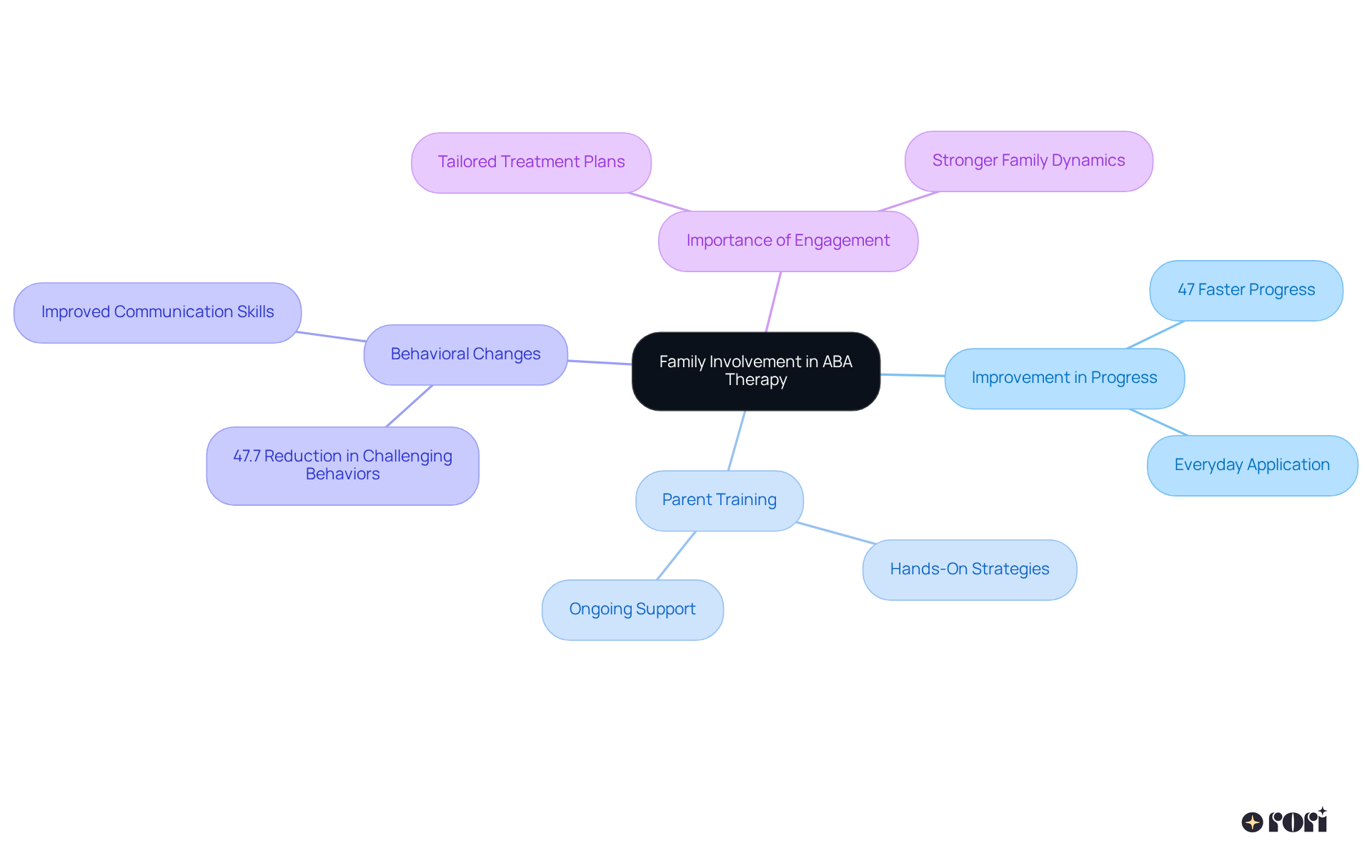
The long-term advantages of ABA treatment go beyond just immediate behavioral improvements. Research consistently shows that young individuals who receive regular and high-quality ABA therapy often experience lasting benefits in communication, social skills, and adaptive behavior. Many of these young individuals carry the skills they’ve learned during therapy into their everyday lives, leading to a better quality of life and greater independence.
For instance, studies reveal that kids who engage in early and intensive ABA therapy—especially those receiving at least 25 hours a week—tend to excel in school and build meaningful friendships. There’s a wealth of evidence from ABA therapy research suggesting that longer treatment durations, especially when combined with active caregiver involvement and education, lead to significant improvements across various developmental areas. Caregivers who understand ABA principles can make informed decisions that positively impact their child’s progress, resulting in more effective and lasting behavioral changes. Plus, when caregivers are educated, it boosts their confidence, reduces stress, and enhances family dynamics, which are crucial for supporting a young person’s growth.
As a side note, the success rate of ABA treatment for autism is reported to be over 89%! These long-term outcomes highlight the importance of ABA therapy research as a foundational resource for investing in support for youth with autism, ensuring they have the tools necessary for success in both social and academic settings.
To further support your child’s development, consider engaging in regular chats with therapists, participating in training sessions, and consistently applying learned strategies at home. Let’s explore this together! We’re here to help you every step of the way!
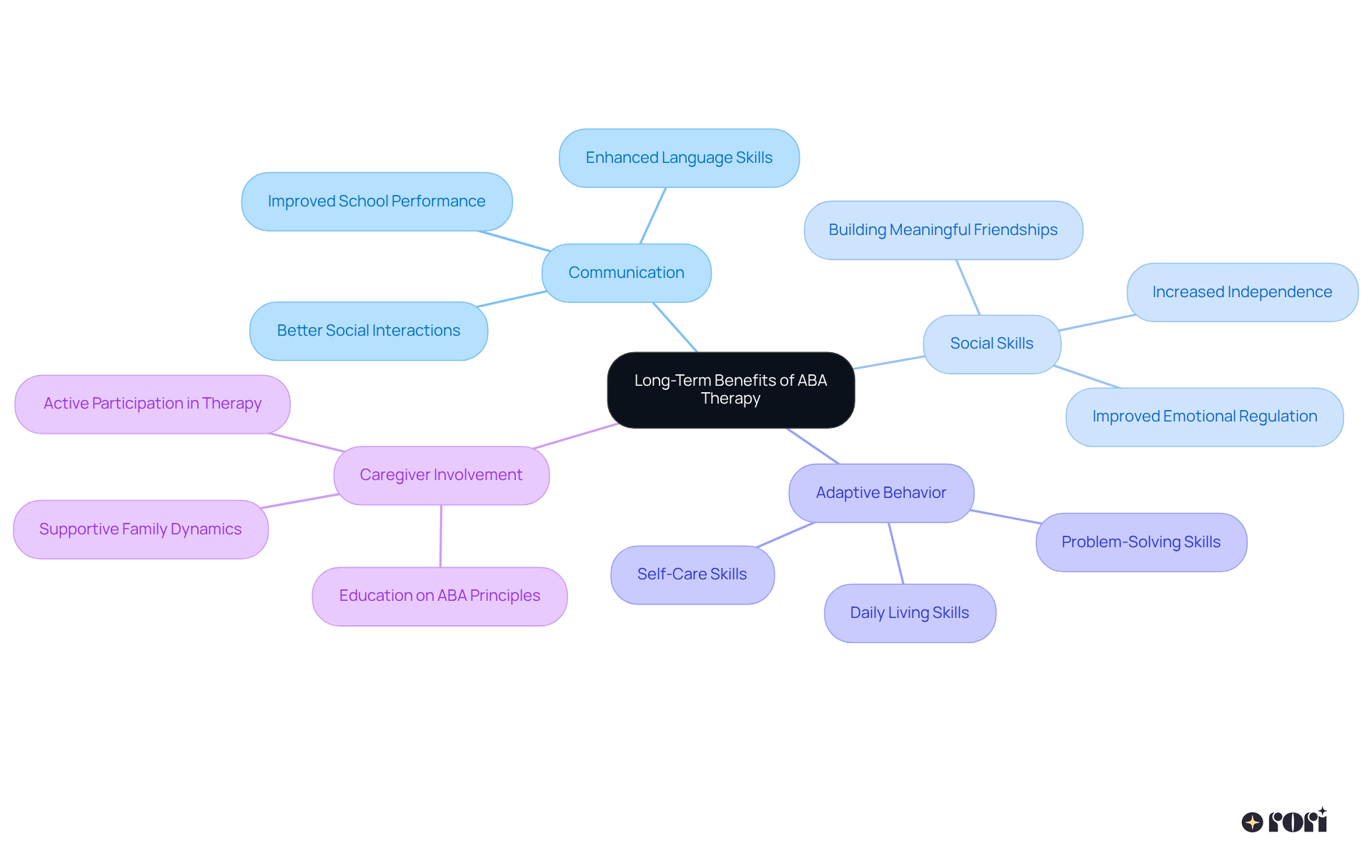
Data-driven methods are truly transforming ABA therapy research, equipping therapists with the essential tools they need to monitor progress and make informed choices. Systematic data collection is key to spotting behavioral patterns, which allows therapists to tailor interventions based on real-time insights. This analytical approach not only personalizes treatment plans but also boosts the overall effectiveness of therapy.
For example, when therapists continuously evaluate and examine data, they can discover which strategies work best for each individual. This means they can quickly adjust their approach to enhance therapeutic outcomes. ABA therapy research shows that systematic data collection can lead to medium to large effects on various abilities in individuals with Autism Spectrum Disorder (ASD). By utilizing data, therapists ensure that interventions are evidence-based and tailored to each child's unique needs, ultimately leading to better treatment outcomes.
Regular evaluations create an important feedback loop, allowing therapists to celebrate those little victories that add up to significant progress. This really reinforces how effective data-driven methods can be in the field of ABA therapy research. Let’s explore this together!
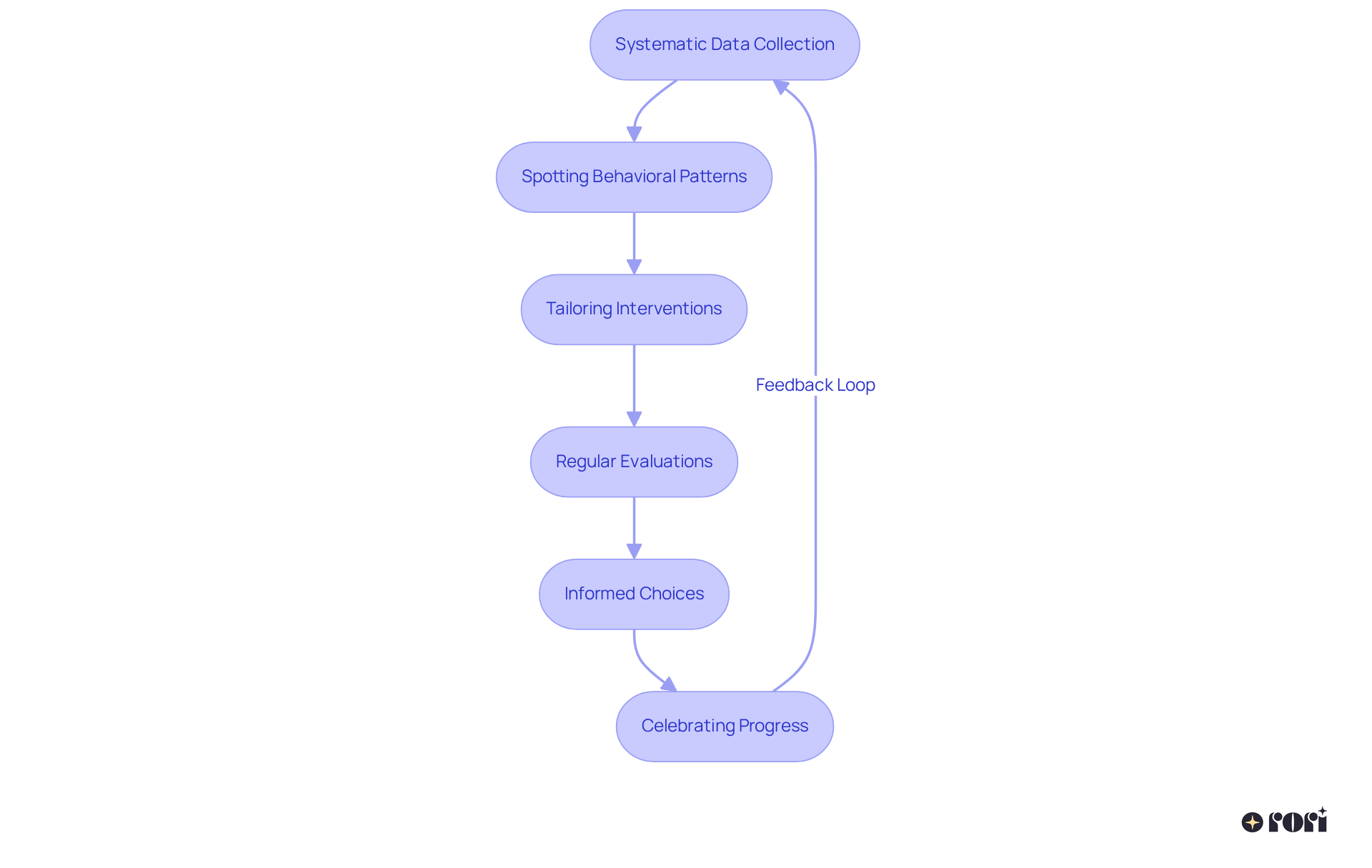
The insights from ABA therapy research truly highlight the profound impact this approach can have on children with autism. By focusing on personalized treatment plans, early intervention, and active family involvement, ABA therapy not only tackles immediate behavioral challenges but also nurtures long-term growth and development. The evidence shared shows how effective tailored strategies and data-driven methods can be, reinforcing that each child's unique needs can be met through customized interventions.
Throughout the article, we see key arguments illustrating how comprehensive ABA therapy not only enhances communication and social skills but also empowers families to play an essential role in their child's journey. The use of technology adds an exciting dimension to the therapy experience, offering innovative tools that allow for real-time adjustments and more effective treatment outcomes. Plus, the long-term benefits of early and consistent ABA therapy provide a clear pathway to improved quality of life for children and their families.
Ultimately, the message shines through: investing in ABA therapy through informed, proactive engagement can lead to transformative changes in the lives of children with autism. We encourage parents and caregivers to stay informed about the latest research and innovations in ABA therapy, actively participate in their child's treatment, and advocate for the personalized strategies that can truly make a lasting difference. Together, these efforts can pave the way for brighter futures and more fulfilling lives for children on the autism spectrum. Let’s explore this journey together!
What is ABA therapy and how does it benefit children with autism?
ABA therapy, or Applied Behavior Analysis, is an evidence-based intervention that has shown to significantly improve communication skills, social interactions, and reduce challenging behaviors in children with autism. Studies indicate that over 89% of ABA therapy research reports positive behavioral changes.
How long do the benefits of ABA therapy last?
Long-term, intensive ABA intervention can lead to significant positive effects on language skills in individuals with autism spectrum disorder (ASD), with improvements lasting for up to 18 years after the intervention.
What is the importance of personalized treatment plans in ABA therapy?
Personalized treatment plans are crucial as they are tailored to meet the unique needs of each individual. These plans are developed through thorough evaluations and include measurable objectives and evidence-based strategies, ensuring effective and adaptable interventions.
How do qualified behavior analysts contribute to ABA therapy?
Qualified behavior analysts craft personalized treatment plans based on thorough assessments of an individual's strengths and challenges. They utilize data-driven approaches to create clear objectives, maximizing the potential for positive outcomes.
What role do caregivers play in ABA therapy?
Active involvement of caregivers in ABA therapy is essential, as research shows that about 90% of individuals demonstrate remarkable progress when caregivers are engaged. This collaboration helps support the child's behavioral goals through education and involvement.
What techniques are commonly used in personalized ABA therapy strategies?
Techniques such as positive reinforcement, prompting, and modeling are key components of personalized ABA strategies, enhancing the overall effectiveness of the therapy.
How is ABA therapy recognized in the medical community?
ABA interventions are endorsed by medical organizations, including the US Surgeon General and the American Psychological Association, reinforcing its validity as an evidence-based treatment for individuals with autism.